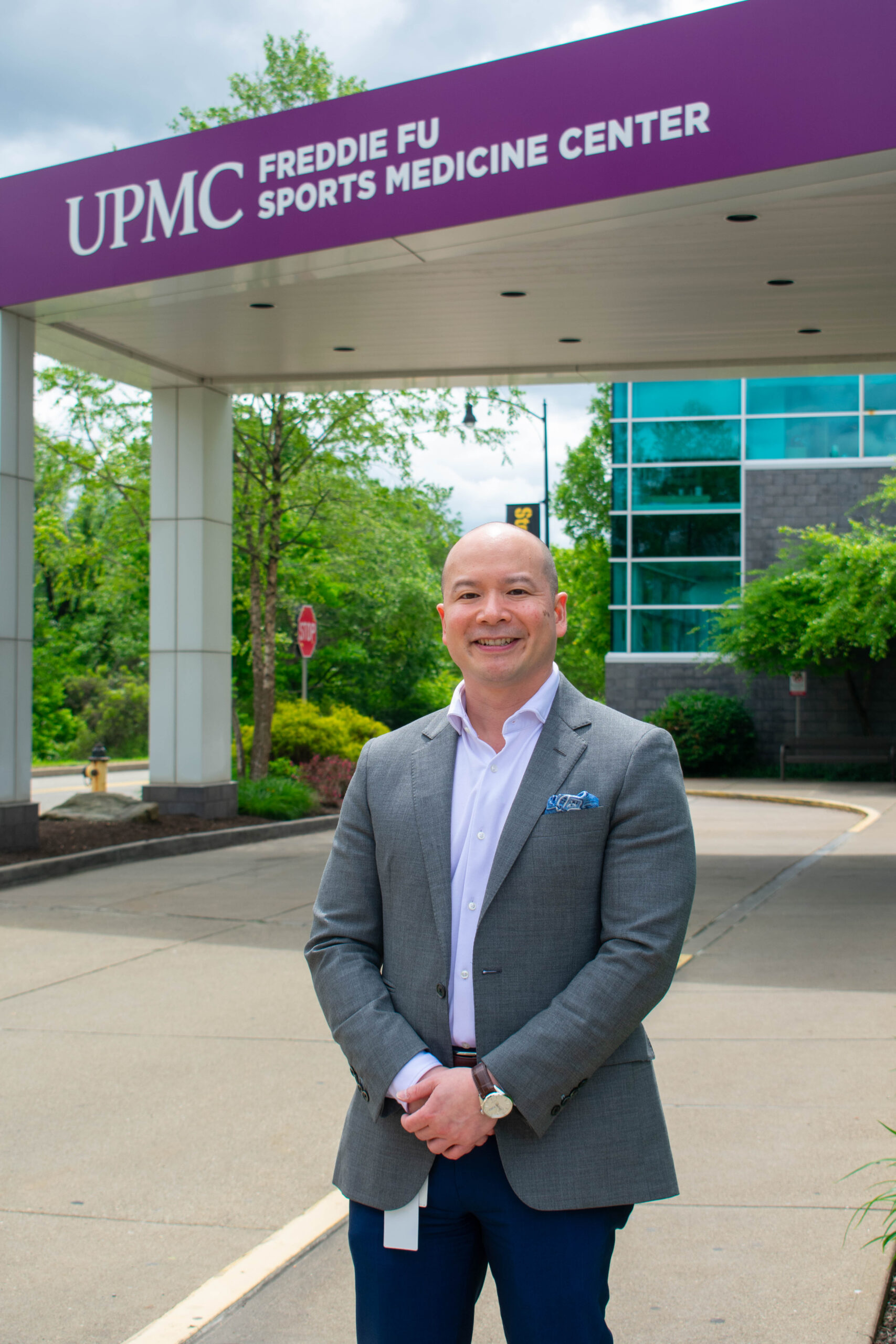Can you share a bit about your early life and what sparked your interest in research, medicine and orthopaedics?
I’m a native Pittsburgher through and through. I was born in West Penn Hospital, grew up in Monroeville and went to Shady Side Academy. My father was a neuroradiologist who worked at West Penn for more than 30 years and my mother was a nurse before she immigrated with my father from Taiwan to Pittsburgh in the 70s. My paternal grandfather was a family medicine physician, so I would say that medicine was always somewhere in my DNA! After graduating from high school, I went to Harvard for college, medical school, and residency.
During those formidable years of training, I had amazing opportunities to work with brilliant people who taught me about the power of research and collaboration. Dr. Fu was a huge figure in Pittsburgh when I was growing up – I went to school with his children and remain friends with them today – and there’s no question that my early curiosity in orthopaedics was influenced by him. However, medical school is where my interests fully solidified.
I often joke that most of medical school was a meandering journey for me trying to figure out my field of interest…until my orthopaedic elective. After that, it was hook, line, and sinker. Identifying a problem, addressing the problem, and then witnessing the impact of the treatment in real-time was inspiring. Orthopaedics is one of the few fields in medicine that can offer immediate gratification! In addition, the people in orthopaedics are simply amazing. They are some of most intelligent, well-rounded, and interesting people you will ever meet. For me, it was the field and the people. Improve someone’s quality life and be around really great people. Who wouldn’t want to be an orthopaedic surgeon!
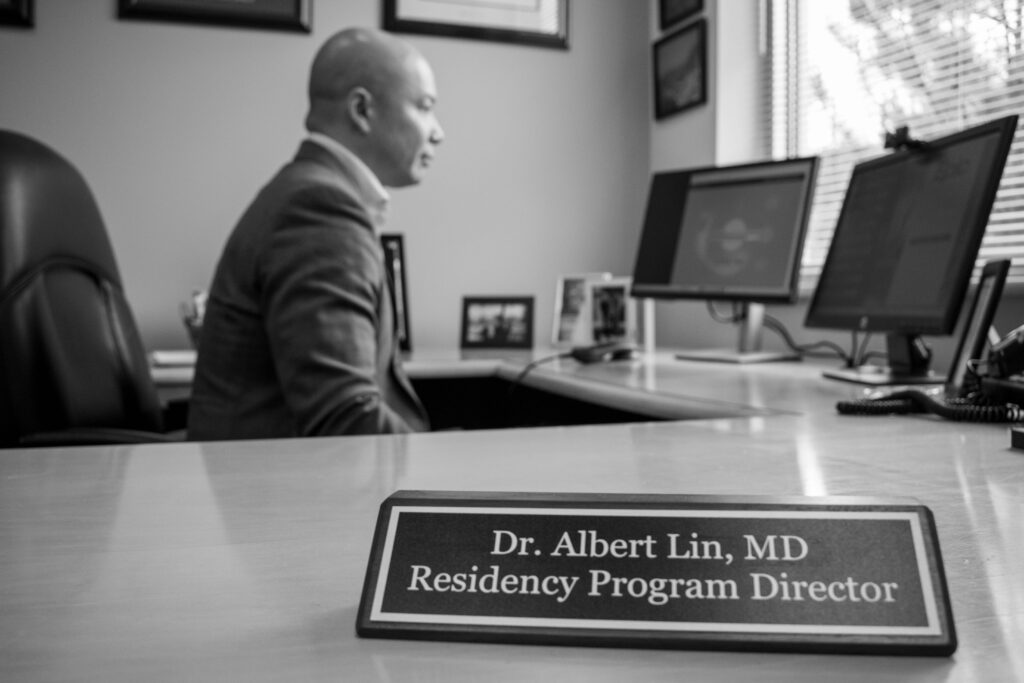
What were some pivotal moments or influences during your education that shaped your research interests?
I have always loved sports and was interested in all aspects of sports medicine. After I had matched into fellowship in sports medicine at Pitt, my very first rotation as a chief resident was on the shoulder service with Dr. JP Warner at Massachusetts General Hospital, who was one of the founders of sports medicine at Pitt with Drs. Fu and Harner. It was my first real experience in all aspects of shoulder care including sports injuries, degenerative pathologies, and shoulder replacements – it was fascinating. I decided right then and there that I would do an additional fellowship in shoulder surgery, and this would dovetail nicely to a career in both sports medicine and shoulder.
Both fields are quite interrelated and my current practice as a shoulder surgeon certainly reflects this. In clinic we might see a 16-year football player in one room with a shoulder dislocation and an 85-year-old with shoulder arthritis in another or a 60-year-old with rotator cuff tear in yet another. What really shaped my research interests were the tremendous mentors and colleagues that I have had the fortune to work with. I had the opportunity to train with Drs. Warner and Higgins, in addition to Dr. Walch in France, a world-renowned expert, during my shoulder fellowship at Mass General Hospital and Drs. Fu, Bradley, Rodosky, West, and Harner during my sports fellowship at Pitt. They all remain mentors, friends, and colleagues to this day.
When you are surrounded by brilliant people who ask interesting questions, challenge you to push yourself and think differently, and care about your development and growth, you cannot help but be inspired to follow in their footsteps. Their passion has a way of permeating. All of these individuals, and many more, were pivotal in shaping my research interests. In addition, as I got further in training, I quickly realized that there were always more questions than answers – dogma today can be obsolete tomorrow. My own personal curiosities easily led me to a path of academic medicine, and I have been fortunate to work with so many individuals who have provided me with the wisdom and resources to support me in my career. I hope I can do the same for the next generation as well.
What were your initial career goals when you started your journey in research, and how have they evolved over time?
Building up research is definitely a marathon, and not a sprint. It takes time, a lot of effort, and patience, but it is extremely rewarding. Everyone’s path is a little different. My research career developed somewhat organically. Initially, I wanted to be involved with research in any possible way. In the very beginning, this started with simple case reports and retrospective clinical studies looking up outcomes on my partners’ patients before I had sufficiently built up my own practice.
I then started seeking collaboration opportunities with Rocky Tuan, PhD in Bioengineering, Rich Debski, PhD in the Orthopaedics Robotic Laboratory, and William Anderst, PhD in the Biodynamic Laboratory with basic science studies. Through the generosity of seed money provided by our department for these basic science collaborations, we were able to use that funding, generate preliminary results, and flip it into two federally funded NIH grants on cadaveric biomechanical shoulder instability research and in vivo studies on shoulder replacement and reconstructive options of irreparable rotator cuff tears and arthritis. The collaborations with my basic science colleagues has been a real joy in my career. It took years and years of applications and rejections before I was able to obtain those grants, but you learn a lot about yourself with these failures regarding how to hone your clinical questions, study designs, and ultimately be a better researcher.
As my practice became busier and I was able to study outcomes on my own patients, our research team started to grow exponentially. At this time the team includes medical students, dedicated research fellows both at the medical student and attending level, residents, fellows, in addition to international research fellows. We are now involved in prospective observational and randomized trials, both locally and nationally, which includes a multi-center multimillion dollar military and civilian study called the OASIS trial on shoulder instability research funded by the Department of Defense, in addition to retrospective clinical studies. My own personal research productivity in shoulder instability and in vivo kinematics and in vitro biomechanics developed very organically as a result of the many resources at Pitt available to me, but we also continue to push the envelope in every possible domain of shoulder research one could imagine.
The fun thing about research is collaborating with colleagues, trainees, and others towards a common goal. No one can do it in a vacuum or on their own. Dr. Fu was a tremendous mentor for me regarding how to successfully run a large research team, how to continue pushing the envelope, how to motivate and mentor, and how to inspire people to buy into a common vision.
Are there specific achievements or milestones you aspire to reach in your career?
The goal in research is never to be complacent. It has been a tremendous privilege working at Pitt and collaborating with all of my partners, and in the past several years, the shoulder research that has been generated from Pitt has been tremendous – in addition to the federally funded research mentioned above, we have been recognized with back to back Best Overall Paper Awards at AANA over the last two years, the Excellence in Research Award at AOSSM, and numerous Best Papers and Posters for our fellows, residents, and medical students at ASES, AOSSM, AANA, OSET, and Shoulder360.
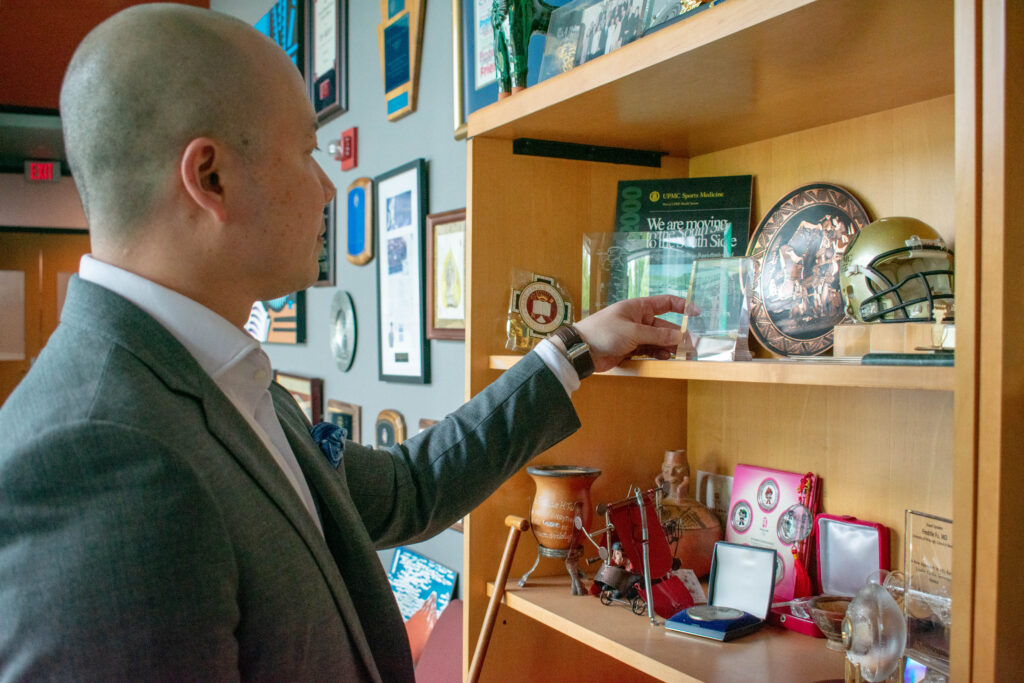
It is a testament to the talent and hard work of individuals that I get to work with every day. It has been amazing to witness this growth. But success should not breed complacency. There is always more – more questions, better studies, and it is important to never lose that appetite. I would love to continue this productivity and great work in the decades to come. Achieving an R01 grant would be a dream. Developing technology at Pitt that is implemented worldwide would be fantastic. Establishing a shoulder registry at Pitt for years to come so that long after I am gone clinicians and researchers can track outcomes would be quite a legacy.
However, more than the achievements and milestones, the goal is always to improve the care of patients and research is the pathway to achieve that. I’m a firm believer that if you have the right motivations, the rest will take care of itself. Any achievements or milestones that I, or quite frankly our team, achieve from that are simply a by-product from an innate desire to improve patient outcomes.
Could you provide an overview of your current role at the BMRC and responsibilities in your research position?
The Pittsburgh Shoulder Institute (PSI) is one of the core clinical groups at the BMRC. I am the co-director of PSI along with my colleague, Dr. Mark Rodosky. Many years ago, Dr. Rodosky and I in our roles as Chief Emeritus and Chief of Shoulder Surgery at UPMC, founded the PSI as a collaborative effort to improve shoulder care at Pitt with respect to clinical care, research, teaching, and diversity. The PSI includes clinicians, basic scientists, physical therapists, as well as research fellows, clinical fellows, residents, medical students, and post-graduate students who are involved with shoulder research.
Since 2018, we meet regularly, at least once a month, to discuss collaborative projects and research which span multi-surgeon retrospective cohort studies to federally funded randomized controlled trials and everything in between. Dr. Rodosky and I oversee these efforts. The growth of our group has been tremendous.
The establishment of the BMRC has provided us with an even greater platform. Through the BMRC, we now have more opportunities to expand our footprint outside of Pitt and we are very grateful for the opportunities provided to us by Mr. Bethel, Dr. Lee, and Dr. Hogan. It is indeed a very exciting time for shoulder research at Pitt!
Research can be demanding. How do you maintain a balance between your professional and personal life?
I wear a lot of hats. In addition to a very busy clinical practice, maintaining a busy research portfolio, traveling to teach and present our research, being a residency program director, training our fellows and residents, and serving as a division chief and vice chair of the department, I am more importantly a husband and father to two beautiful little girls. It is challenging maintaining a work-life balance, and anyone in my shoes who tells you it isn’t, is not speaking the truth. The first thing I would say is that work-life balance is different for everyone. What works for one person may not work for the other.
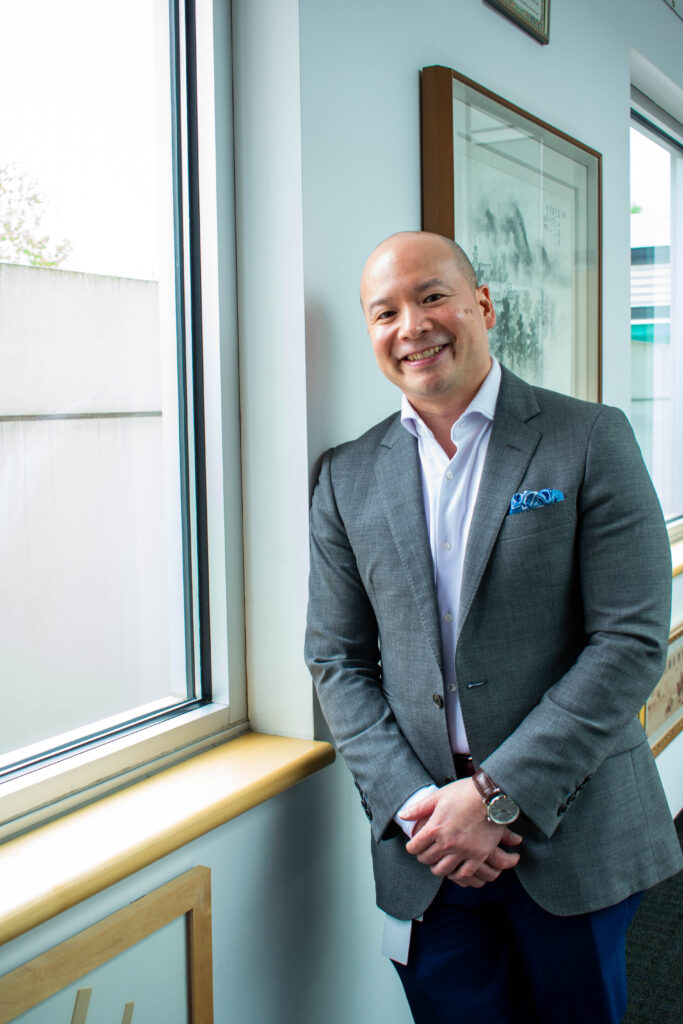
I am blessed to have a spouse who has tremendous patience and understands my work demands. My wife understands that I may not be able to be home for dinner every day of the week, or that I may be away for travels 2 weekends in a row, or I may need to be at football coverage for 1 of the remaining two weekends of the month. That said, she needs the communication ahead of time so she can plan in advance, mentally and physically. That is a system that works for us.
Second, I try not to take my work home when I can help it – I try to finish all administrative tasks before I go home so that they are not looming when I am home.
Third, we try to set time aside for when I can do the research at home and when I may not be as readily available – for instance, I do a good portion of research and other academic tasks for a few hours on Saturday and Sunday morning, and then I don’t think about it for the rest of the day. Knowing when I can be available or unavailable helps set expectations for all of us.
Fourth, and perhaps most importantly and most challenging for me, is the act of mindfulness and being very present in the moment. My family constantly adapts to the time demands on my schedule, and I owe it to them that the quality of time spent is valuable when we have it. Work-life balance is definitely a challenge. I am by no means an expert, but I try to get better each day. Once I discover the secret sauce, I will definitely let you know.
Are there specific areas within your field that you are particularly interested in exploring further in the coming years?
It is a very exciting time to be a shoulder surgeon. There is tremendous innovation in this field, and the next two decades will be a very rapid evolution of discovery and technology. Biologics is a hot topic. The next generation of surgeons will likely be privy to a tremendous amount of research around new biologic options that improve healing and perhaps shorten recovery. AI/augmented reality/virtual reality are rapidly expanding technologies that will definitely play a role in helping shoulder surgeons make decisions regarding surgical approaches in addition to preoperative and real-time intraoperative planning in both arthroscopic and open surgeries. Some of these technologies are already implemented but they are very much at their infancy. We have not scratched the surface on the best surgical procedures for shoulder instability, and the next two decades will also mark an explosion of alternative options such as different bone grafts and surgical approaches.
The field of shoulder replacement has been rapidly expanding over the past two decades, but we are only in the very beginning phases of treatments like the reverse total shoulder replacement, and the next two decades will mark a new generation of innovations in implant design and technologies like 3D printed patient specific custom implants, robotics, smart tools that prevent a surgeon from deviating from a preoperative plan.
Virtual reality also allows for opportunities like remote training and participation in the OR of a colleague real time from across the world or imagine overlaying a hologram on top of what you are seeing during surgery to help you make the perfect cut. I personally find instability and shoulder replacement research to be fascinating, and we certainly have the capabilities to expand on the research we are currently doing at Pitt in these fields.
The future is very bright for our young shoulder surgeons who will benefit from all of this exciting research. We are excited at the PSI and the BMRC to continue pushing the needle.
